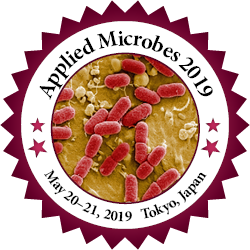
Satish Kumar
AUJ INNOVEDIC, India
Title: Study of antimicrobial potential of important indian medicinal plant extracts against pathogenic bacteria and fungi
Biography
Biography: Satish Kumar
Abstract
Presently emergence of multiple drug resistance to human pathogenic organisms is serious problem around the world, so development of alternative antimicrobial drugs for the treatment of infectious diseases is the need of hour. One approach is to search for medicinal plants, for possible antimicrobial property. In the present study five solvents viz. ethanol, methanol, chloroform, hexane and water was used for extraction from eleven selected plants and used against E. coli, P. aeruginosa which normally found in diabetic patients while C. albicans found in cancer patients. A total of 55 plant extracts were used in the present study. Antimicrobial activity of plant extract found maximum in Azadirachata sp. followed by Embilica sp., Psidium sp., Citrus sp., Murraya sp., Cannabis sp. and Piper sp. and minimum in Amaranthus sp. and Coriandrum sp. Ethanolic extracts of Azadirachata sp. and Embilica sp. while aqueous extracts of Cannabis sp. and Embilica sp. was most effective against E. coli. Ethanolic extract of Cannabis sp. showed maximum zone of inhibition against P. aeruginosa and methanolic extract of citrus sp. found most effective against C. albicans among eleven selected anticancer and antidiabetic plants. The MIC value of the ethanol extract of most promising plant i.e Azadirachata indica was recorded at 5% (5g/100ml). Results from the present study showed that 95% of ethanol extracts of Azadirachata indica had antimicrobial activity against all tested microorganisms. Antibiotic susceptibility of test microorganisms displayed that imipenem antibiotic has higher zone of inhibition of against E. coli followed by levofloxacin, cefotaxime, aztreonam, ceftazidime and amikacin. Against P. aeruginosa showed maximum inhibition zone followed by cefotaxime, amikacin, imipenem, azetronam and ceftazidime, while maximum zone of inhibition was recorded against C. albicans using ketoconazole followed by miconazole, nystatin, clotrimazole. These antibiotic principles are actually the defensive mechanisms of the plants against pathogens. Laboratory and clinical studies of eleven selected medicinal plants especially the most promising plant extract are required in order to better understand the antimicrobial properties so as to allows the scientific community to recommend their uses as an accessible alternative to synthetic antibiotics.

